Coca-Cola spends endless billions on advertising every year but they will never once try to sell you on their products. They sell an idea of happiness, harmony, and togetherness, but some would say it’s a distraction from the disturbing truth. There are a lot of serious accusations against the company that they’ve caused disease, droughts, exploitation, and much worse. So, let’s go on a journey through Coke’s incredible history spanning three different centuries. We’ll know how Coca-Cola really became one of the most recognized brands ever, and at what cost. Because one thing is for sure, you don’t build an empire selling sugar water by telling people the truth.
The Born of Coca-Cola
Back in the 1880s, there was a bit of a backlash against doctors, and people started using home remedies instead. A bunch of deceitful entrepreneurs pounced on this opportunity and started creating potions and elixirs that they claimed had a wide variety of medical benefits. The truth was that they were mostly dangerous, ineffective concoctions of various different chemicals, but with no regulation, they could claim whatever health benefits they wanted, so business was booming.
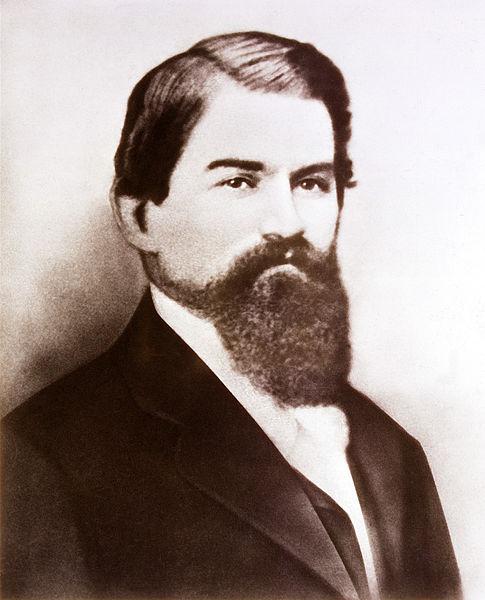
One popular patent medicine was called Vin Mariani, which contained a mix of wine and cocaine that supposedly cured almost any ailment or sickness whatsoever, as long as you drank three glasses every day. One person who absolutely loved this drink was a man named John Pemberton, a war veteran who had been severely injured in battle. The doctors had actually thought he was going to die and dosed him up with morphine to try and mask the pain for his final few hours. But John somehow survived. However, he did develop a serious morphine addiction, which is why when he discovered Vin Mariani, he became hooked on the drink. He thought it was helping him overcome his morphine addiction, and of course, after drinking it, he really did feel better. But that’s not because it was medicinal; it’s because it contained wine and cocaine.
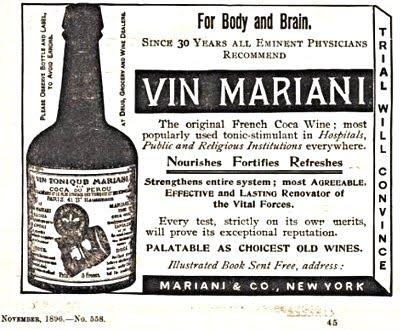
But since Pemberton loved the drink and he was a chemist himself, he decided to create his own version. And in 1884, he launched French Wine Coca, which was basically a ripoff of Vin Mariani with a couple more ingredients added. And yeah, this knock-off drink would soon become Coca-Cola.
Now, to be fair to Pemberton, he wasn’t some snake oil salesman trying to deliberately rip people off. He really believed in his products. However, Pemberton’s timing was terrible. Just a year later, prohibition hit, with many states banning alcohol. Pemberton had to take the wine out of his drink and replace it with carbonated water. But this left the drink tasting very bitter, so he added a huge amount of sugar to counteract that.
Now that the wine was removed, he could continue selling French Wine Coca, but they needed a new name. Luckily, Pemberton’s bookkeeper, Frank Robinson, came up with a catchy sounding suggestion: Coca-Cola. Now, the company would later claim that the name doesn’t mean anything and it’s just a nice-sounding alliteration. Of course, this isn’t true. The name was a reference to the drink’s two main ingredients: the kola nut, which contained caffeine, and the coca leaf, which contained cocaine. To this day, Coca-Cola denies their formula has ever contained cocaine, despite the fact it’s extremely well-documented it contained the coca leaf, which contains cocaine. Eventually, by 1929, they would find a way to remove all the active cocaine from the coca leaves once it became clear that cocaine wasn’t quite the magical medicine they’d first thought.
Back in the 1880s, nobody was worried about the cocaine in the drink, so now that the wine had been removed, Coca-Cola could continue being sold. The only problem was, not many people were buying it. Pemberton was still trying to sell people on the medicinal aspect of the drink. Early ads for Coca-Cola described it as a harmless, wonderful brain tonic that relieves headaches and upset stomachs. But sales were slow because there were countless other patent medicines offering the same thing, so Coke didn’t really stand out. Meanwhile, Pemberton was becoming increasingly ill. His pain was worsening, his addiction growing stronger, and by 1888, John Pemberton was dead.
The tragedy is, he had absolutely no idea that his drink would soon become one of the most well-known drinks on the entire planet.
Reason behind the rapid growth of Coca-Cola
Right before Pemberton died, he sold the company for $2300 to an ambitious workaholic named Asa Candler. Candler then began buying out any outstanding shares owned by other people so he could have the company fully under his control. Later investigations would find that Candler may not have really bought all those shares, as some of the documents contained forged signatures. We may never know exactly what happened because Candler even had the early records of the company burned, most likely to cover his tracks.

But all that was irrelevant because by the 1890s, Asa Candler was fully in charge of Coca-Cola. But remember, the drink wasn’t actually that popular at first, so Candler started filling the town with Coke-branded banners, billboards, and placards. They even painted the logo on barns and basically plastered the Coca-Cola logo on anything they could, so people started seeing the logo everywhere they went. But one of Coke’s first strokes of marketing genius was to contact every pharmacy in the area, get a list of their top customers, and send them a free coupon for Coca-Cola. The logic was that by giving people a free trial, they’d become customers for life, especially since the drink contained several addictive chemicals.
However, it soon became clear that advertising Coca-Cola as a medicine was the wrong strategy. Rather than just market to people who were ill, they could market it to everyone by simply positioning it as a tasty, relaxing drink that anyone could enjoy. This had the added benefit of disassociating Coca-Cola from the patent medicine industry, which would soon face a lot of scrutiny once people realized that most of their claims were complete lies.
Coca-Cola’s mass marketing strategy was a huge hit as the sales started to grow rapidly. Candler reinvested more and more money into advertising and even started paying movie stars and athletes to endorse the drink. So much of Coke’s success has been about creating such a positive, wholesome image in people’s minds of what the drink represents, and what better way to do that than pay popular celebrities to recommend the drink? They even started heavily featuring Santa Claus in their ads at Christmas, always holding a Coke to make the connection in young kids’ minds between Coca-Cola and the joy of Christmas.
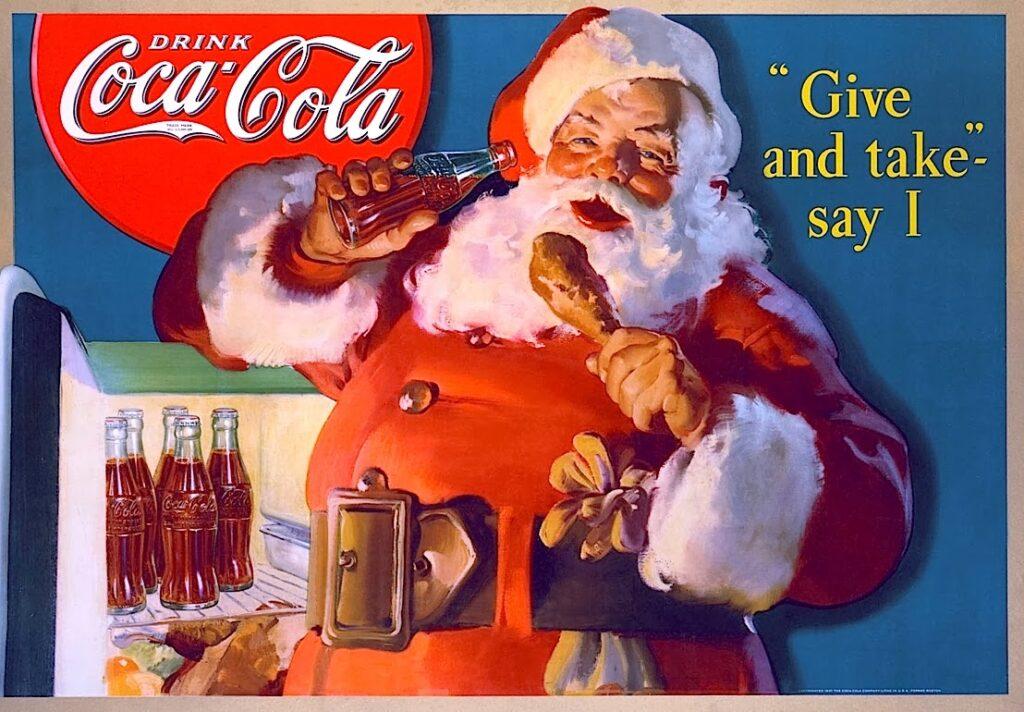
Of course, none of this marketing may sound particularly special, but at the time, it was. Coca-Cola pioneered many marketing strategies that soon became commonplace. For example, ‘Sex Sells’ may be an advertising cliche these days, but very few mainstream companies exploited this as much as Coke did with their use of “Coca-Cola girls,” attractive women who always had a Coke in hand. Coke even created a statistical department to analyze car traffic and movement in supermarkets so they could determine the most effective places to put their ads.
From radios to TV, Coke was always ready to throw money into advertising on these new mediums to ensure everyone everywhere knew about its products. Initially though, Coke was mostly sold in soda fountains. This allowed Coke to save huge amounts of money because they simply had to distribute the syrup and then it would be mixed with carbonated water by whoever was selling it. So the shipping and distribution costs for Coke were much lower. But then one day, two lawyers named Benjamin and Joseph came to Asa Candler with an idea: let’s bottle it. Candler thought this was a really dumb idea. Bottling was very expensive and complicated, but Benjamin and Joseph said they would take on all the cost and risk themselves. So Candler agreed and signed a contract granting them full bottling rights for Coca-Cola for just a nominal fee of one dollar. Candler figured he had nothing to lose in the unlikely scenario that this bottling idea actually went well; it simply meant he would sell lots more of the Coke syrup.
Read More: How WhatsApp Makes Money
Of course, as we now know, bottled Coke was an unimaginably huge success. Customers loved bottled Coke. So, at first, this was great for Candler. It meant the bottlers were buying loads and loads of Coke syrup from him, and this was a great revenue stream for the business. But there was one very major problem. Because Candler hadn’t believed bottling Coke would work, he’d put almost no thought into the contract he signed. So there was no time frame set on the deal and no mention about changing the price if the cost to produce the Coke syrup increased.
What this meant is that Asa Candler had given the bottlers a never-ending contract to supply them with Coke syrup at the same low price no matter how much the cost of the raw ingredients went up. This would lead to multiple lawsuits between Coke and its bottlers. Over the next few decades, the Coca-Cola company would end up paying countless millions of dollars to buy back some of the rights that Candler had sold away for just one dollar. But back in the early 1900s, this wasn’t a worry for Candler because sales of Coca-Cola were higher than ever and growing every year.
Of course, this wasn’t really because of the product. There were countless very similar drinks out there, and remember, Coca-Cola was a knock off of another drink anyway. The reason for the rapid growth was marketing. Every single year, Coca-Cola spent more and more money on advertising, and every single year, sales of Coca-Cola grew. However, arguably Coca-Cola’s biggest successes of all would come from a pretty surprising source.
Coca-Cola’s Overseas Expansion during the War
Once the Second World War broke out, it was announced that sugar would be rationed. However, Coca-Cola made the absurd claim that they should be exempt from the sugar rationing because Coke was an essential wartime product. And even more absurdly, the government agreed. This was largely because Coca-Cola spent huge amounts of money on lobbying the government. Coke funded countless studies to try and convince the government of Coke’s benefits and claimed that Coke would keep up morale and provide an energy boost for soldiers. Eventually, the US government agreed to appoint a Coca-Cola executive onto the rationing board who then gave Coca-Cola an exemption from sugar rationing. Whilst every other company had to reduce the quantities of sugar they used during the war, Coca-Cola didn’t stop there. Coke’s president publicly promised, “We will see that every man in uniform gets a bottle of Coca-Cola for five cents, wherever he is and whatever it costs our company.”
Coca-Cola made a seemingly risky decision during World War II by selling their drinks at a low price that would result in losses for the company. However, this decision turned out to be genius for multiple reasons. Firstly, it created a strong connection between Coke and the war effort in the eyes of the public, especially soldiers. This helped Coke gain huge public support and goodwill. In the millions minds of Americans, Coke and Patriotism become connected. Coca-Cola seized this opportunity and ran new wartime ads showing soldiers holding Coke bottles. Behind the scenes, Coke had made a deal with the government to help them set up Coca-Cola bottling plants overseas. They claimed that it would spread American influence and boost soldier morale, but in reality, taxpayers were helping to fund Coke’s international expansion during the war.

During the war, 64 Coke bottling plants were set up around the world on different continents, mostly funded by governments. The technicians who installed Coca-Cola plants during the war were deemed just as vital as those who were fixing tanks and planes. Soldiers were now able to access Coke wherever they were in the world and started sharing the drink with locals, helping Coke’s expansion into even more new countries. The soldiers became Coke’s biggest advocates, and the U.S. military basically became a Coca-Cola sales force, introducing new people to Coke wherever they went. While the war had a devastating impact on most companies and people, Coca-Cola was expanding faster than ever all over the globe. As of today, there are only two countries in the world that don’t sell Coke, Cuba and North Korea. The deals Coke made during the war were largely responsible for Coke’s rapid global expansion across the planet.
However, there is one tiny problem with this heartwarming idea of Coca-Cola as a patriotic company looking out for American soldiers. During the war, Coca-Cola was supplying Nazi Germany with Coke as well. While in the U.S., Coke was preaching about supporting the troops, in Germany, they were busy trying to disassociate themselves from anything American and often showed the Coke logo alongside swastikas. Coke was even distributed at Hitler Youth rallies and advertised on Nazi educational pamphlets. Coca-Cola was literally playing both sides, after all, Germany was a huge market for them. However, as the war progressed, restrictions were introduced that cut off the supply for many goods to Germany. For most multinational corporations, this meant they couldn’t sell their products to Germans anymore.
But the head of Coke’s biggest bottling operation in Germany, a man named Max Kieth, had an idea to counteract these restrictions. He got local chemists to create a new drink that was vaguely similar to Coke. However, rather than being made with Coke syrup, which could no longer be imported, it was instead made from the leftover scraps from other food produce like apple fiber. This new drink would later be named Fanta, and since so many other drinks had been banned because of the war, Fanta became a huge hit in Nazi Germany. Some sources even suggest that Kieth used forced labor from concentration camps to help produce it. What we know for sure is that at the end of the war, the profits of this new Fanta drink all went back to the Coca-Cola headquarters, and Max was given a promotion in the Coca-Cola company. By 1955, Coke was selling Fanta in many different countries around the world. Of course like so much of their history, Coke tried to distance themselves from what really happened.
Coca-Cola’s Secret formula
Coke will try to tell you that their biggest secret is the drink’s secret formula, which is hidden in a high-security vault for dramatic effect. But the formula isn’t that secret – it’s on Wikipedia. Of course, Coca-Cola’s success has very little to do with the formula. You could create a clone product, but you’re never going to be able to compete with them.
Let’s look at why. One day, a teacher at a new school suggested to the headmaster that they add some healthier choices to the school vending machines, like some fruit juices. She was horrified when she was told it wouldn’t be possible because the school had an exclusive contract with Coca-Cola. Coke paid the school three thousand dollars a year, or around one dollar per student, to dictate which product the school sold. It turns out contracts like this had been struck with countless different schools as part of Coke’s cradle to grave strategy. Basically, the best way to make someone a Coke customer for life is to ensure they drink it from the earliest age possible. One Coke marketing chief pointed out that it’s far easier to get them at a young, vulnerable age to become a cult customer for life than to try to convert them later on when they’re older. In some of the contracts, the school could even earn additional money by selling more Coca-Cola to its kids. And since many schools were underfunded and in desperate need of money, they would shield Coke’s products to their children.
This is just one of many ways Coke managed to circumvent the rules about advertising to children. Another way is that Coke has produced countless collector’s items, including Barbie dolls, playing cards, board games, delivery trucks, and other toys that they claim are for adults. Then, of course, there are all the Christmas ads deliberately tying Santa and Coca-Cola together in the minds of impressionable children. In 1982, Coke even bought Columbia Pictures so they could easily integrate product placement into their films. Although they later sold the film studio and decided just to pay other companies for Coke product placement instead, product placement in family films is a clever loophole that allows them to circumvent rules about targeting children. And it works.
Coke is one of the most recognized brands in the world, but back in the 80s, a problem was emerging for Coke. More and more data was piling up about the negative health effects Coke was having. There had always been concerns about Coke rotting your teeth, but new data was showing the serious effects Coke was having on obesity, diabetes, and a string of other health issues. For example, one study of children found that even just one extra sugary soft drink a day gave them a 60% greater chance of becoming overweight. Another showed that if babies are exposed to a high intake of sugar, they will be conditioned to depend on sugar for the rest of their lives.
For a brand that is built upon its image of wholesomeness, it was a major setback being so directly connected to such a wide variety of health problems, especially since Coke was actively pursuing a strategy of offering bigger and bigger portion sizes of its drink. It also didn’t help that the drink contained caffeine. Coca-Cola claimed that this was purely for taste purposes, but in blind taste tests, people couldn’t tell the difference with a non-caffeinated version. This left some people wondering why Coke continued to add this addictive caffeine to a drink that’s being sold so much to kids.
However, the soda industry had come to a similar realization that the tobacco industry had come to. It’s easier to cast doubt on the science than debate on policies because you can always just claim that more research is needed. So behind the scenes, Coke was pouring hundreds of thousands of dollars into studies to cast doubts on the connection between soft drinks and obesity and diabetes. Unsurprisingly, the studies paid for by Coke generally claimed that Coke wasn’t causing many health problems. However, they conveniently didn’t mention who’d funded those studies.
Coke also spent endless millions of dollars on lobbying state officials against sugar taxes and stronger dietary guidelines. They reportedly made deals behind closed doors about donating to certain politicians’ campaigns in favor of special treatment for Coke. They also continue to throw billions of dollars into sponsoring athletes and major sporting events to try and create the illusion of a connection between great athletic performance and Coca-Cola.
However, Coke could only stall for so long before the science became too undeniable to dispute. So they began expanding into other drinks, for example, a bottled water brand called Dasani. However, this immediately backfired when it launched in the UK, as it was quickly discovered that this expensive bottled water had essentially just come out of a local tap. Now, Coke tried to defend itself by explaining they run the water through some kind of purification process, but this just made things worse because it turns out they’d accidentally added a bad batch of minerals that contaminated the water. As a result, half a million bottles in circulation had to be withdrawn from shops over safety fears. In other words, Coke’s attempt to produce a healthy drink ended up with them being accused of selling expensive contaminated tap water.
However, this wasn’t the worst of Coke’s contamination problems. In 1999, in Belgium, children started becoming ill after drinking Coca-Cola, eventually leading to the recall of all Coke products. France also reported more than 100 people sick from bad Coke and temporarily banned their products as well. The company was very slow to respond to any of these issues and was accused of not taking the problem seriously enough.
Then in India, Coke was accused of contaminating groundwater with wastewater. Koch actually admitted they had a wastewater issue but insisted they fixed the problem. However, later independent tests still found traces of toxic sludge produced at Coca-Cola’s Indian plants, which reportedly made the land barren, killed local animals that drank it, and destroyed the livelihoods of local farmers. The Center for Science and Environment in New Delhi also announced it found pesticides in both Coke and Pepsi that, if consumed over a long enough period, could cause cancer, birth defects, and severe disruption to the immune system.
One woman from a local village told journalists, “Before this company came, our lives were comfortable and beautiful. After the company came, within six months, the taste of the water changed.” Another said, “When we bathe, our heads swim, and it pains, and we scratch all over.” Coke’s environmental record continued to get worse. The company also runs bottling plants in several drought-plagued areas, and officials have blamed Coke for a dramatic decline in available water. This problem was particularly bad in parts of Mexico because, between 2000 and 2006, Mexico’s president was a man who had formerly been the head of Coca-Cola Mexico. The president started giving his former company favorable treatment after getting elected, and during his presidency, he gave Coca-Cola 27 water concessions, which many claim allowed Coke to pollute water and even steal water owned by indigenous people. One local resident claimed, “There used to be a lot of water here. Now, there is a scarcity. They are not paying anything, and they are just taking our water away.” During this presidency, Coke sales increased 50% and became the most popular drink in the country. Critics claim this is yet another example of Coke benefiting from shady deals with politicians.
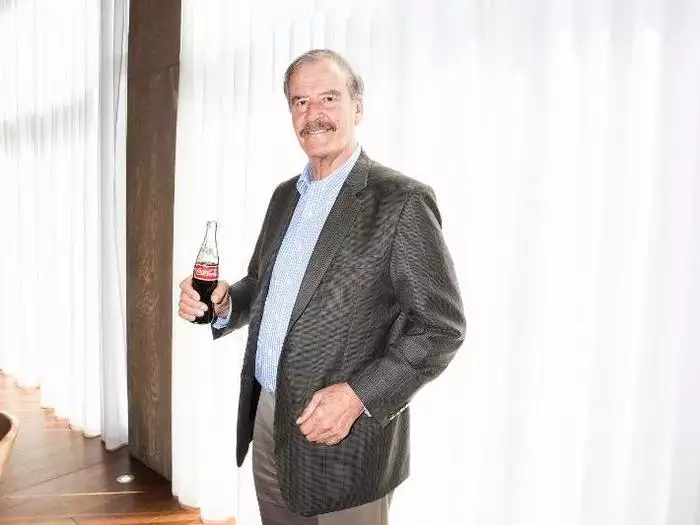
Of course, Coca-Cola has always had to acquire vast quantities of natural resources to succeed. In fact, it’s the largest sugar buyer in the world. However, as the ’90s arrived, Coke began to face yet more negative publicity. For example, in Mexico City, one shopkeeper said she was told her deliveries of Coke would stop unless she removed an alternative cola from her store. Meanwhile, in Brazil, Coke trolled a new type of vending machine that would increase the price of Coke depending on how hot it was outside. Also, to further boost sales figures and trick investors, Coke engaged in channel stuffing, forcing distributors to buy more syrup than they needed at the end of quarters to make Coke’s profits look better than they really were.
However, the backlash against Coke reached its peak when, in 2003, a campaign was launched called “Stop Killer Coke” that claimed the Coca-Cola company was responsible for the murder of union members who worked in Coke bottling plants in Colombia. Now, Coke denies this, and the exact truth remains unclear. But what we do know is that since 1989, countless unionized workers employed at the Coca-Cola bottling plants in Colombia have been killed, and many more have received death threats. In fact, in 2001, the International Labor Rights Fund filed a lawsuit against Coca-Cola bottlers claiming they’d openly engaged death squads to intimidate, torture, kidnap, and even murder union officials in Latin America. A few years later, another lawsuit was brought about by Guatemalan workers alleging that they and their families at the Cocom bottling plant had been victims of violence after the workers decided to join unions. They had wanted to join a union because some workers were earning just $15 per day for 15-hour shifts. However, again, there were allegations of kidnapped, torture, and murder of union leaders and their family members.
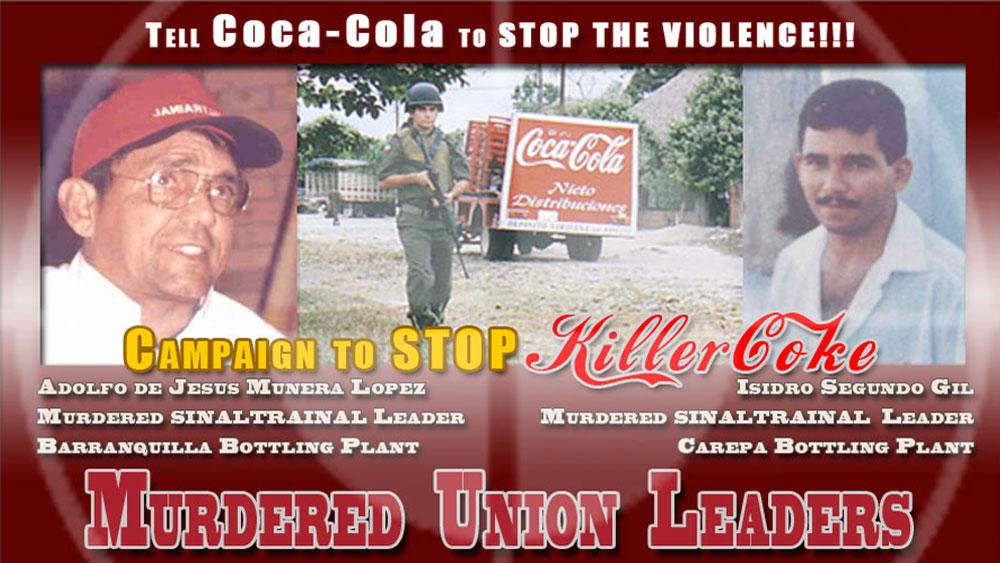
Now Coca-Cola argued that the Guatemalan plant is independently owned and Coke had absolutely no knowledge of these incidents. Coke genuinely may be telling the truth here; we don’t know if they actually colluded or knew about the violence or if they just indirectly benefited. But either way, the unions have been decimated by the attacks and threats, and in parts of Latin America, Coca-Cola has been referred to as the sparkle of death. What we do know for sure is that the deeper you look into Coke’s past, the more you chip away at their wholesome image they try to present. For example, Asa Candler, the entrepreneur who incorporated the Coca-Cola Company and played a pivotal role in popularizing the drink, once said, “the most beautiful sight that we see is the childhood labor. The younger the boy began work, the more beautiful.” However, before we all get the pitchforks out, I think it’s important to acknowledge that if you look at any giant company with such a long history, you’re probably going to find some ethical disasters in their past. That’s not an excuse, but a reminder that business is brutal. Many of the same criticisms of Coke also apply to many of their competitors.
And of course, Coke has done plenty of good for the world too. We can’t come to conclusions from just one side of the story. It’s never black and white. What’s ironic though is that some of the worst press Coca-Cola has ever received had nothing to do with any of these moral or legal issues. The biggest backlash of all came from changing the taste of their drink!
The Coca-Cola and Pepsi Story
The Coca-Cola Company has been offered the chance to buy Pepsi’s business multiple times, including for only $50,000 in 1933. But Coke turned them down. Instead, Coke tried to sue Pepsi for using the word cola in their ads, claiming that they were trying to rip off Coca-Cola’s products. This backfired when Pepsi countersued, and Coke was using anti-competitive tactics to build a monopoly. The courts agreed and ruled that “cola” was a generic term anyone could use. However, since Coke missed their chance to buy Pepsi, they ended up getting locked in an ongoing marketing battle with them. At one point, Coke and Pepsi both started cutting their prices and offering discounts to try and compete with each other. But they soon realized this was hurting both of them. Whether they made a secret deal behind closed doors or not is unknown, but soon they both reverted back to their normal pricing and tried to compete on advertising instead.
But eventually, Pepsi had the simple but genius idea to actually compete on taste. In 1975, Pepsi launched the Pepsi Challenge, where they gave people two white cups, one containing Pepsi and one containing Coca-Cola. People didn’t know which was which and were encouraged to taste both to see which they preferred. The test results showed that Pepsi was preferred by slightly more people. And so, Pepsi started using this stat in all of their advertising. Coke completely denied this was true. But when they conducted their tests, they found that Pepsi did indeed score slightly higher in a blind taste test. Meanwhile, Coca-Cola was slowly but steadily losing market share. They tried everything, huge marketing campaigns, and price promotions. But every year, Coke’s market share slightly declined, and Pepsi slightly increased. It started to seem that perhaps the Pepsi Challenge was right.
The problem was that more people simply preferred the taste of Pepsi, and thus Coca-Cola began an incredibly secret mission. They were going to change Coke’s formula. After rigorous testing and trials, they discovered a new cola formula that consistently performed better than both original Coke and Pepsi. Over and over, they repeated the blind taste test, and the data was clear – the new formula was more popular. And so, just short of Coca-Cola’s 100-year anniversary, they did the unthinkable. They changed the Coca-Cola formula and replaced it with New Coke. And immediately the chaos began.
Every single day, thousands of phone calls and letters arrived at Coke’s offices. They were a mixture of distraught people begging for the old version of Coke, and people who were downright furious Coke had the nerve to take away the original formula. Coke expected the uproar would soon die down, especially once people actually tried the new formula, but the outrage simply intensified. The media was equally full of outrage reports, and the Coke phone lines were constantly jammed with complaints for months. When New Coke advertisements were shown on giant screens and stadiums, people loudly booed. It became popular to hate New Coke.
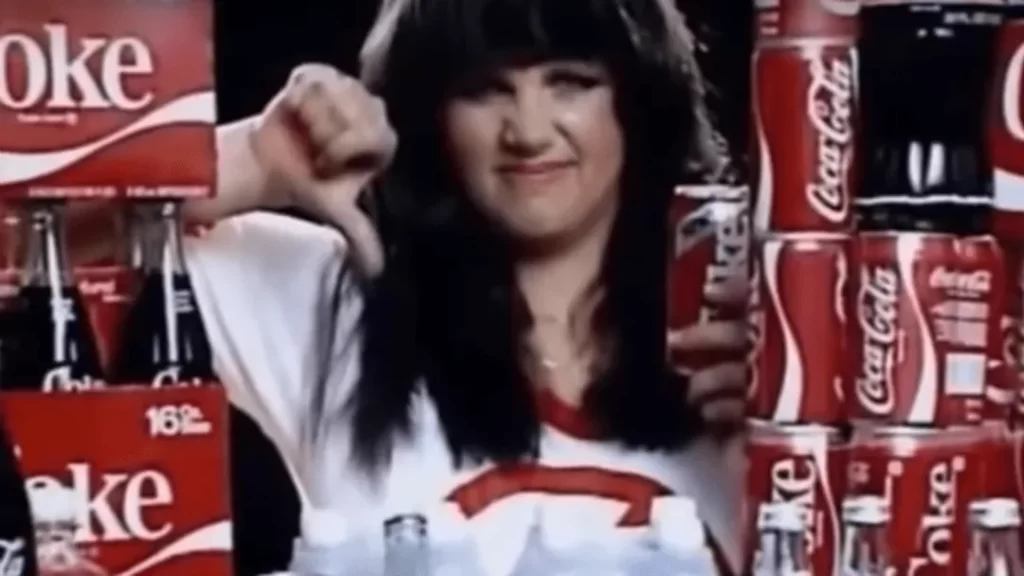
Of course, many of the people complaining hadn’t even tried the new formula. As one Coke employee put it, “We could have introduced the elixir of the gods, and it wouldn’t have made any difference.” It was soon very clear that taste hadn’t been the issue. It didn’t matter if New Coke technically tasted better in blind taste tests. Coke’s success had never been about taste in the first place. Thanks to its incredible marketing, the world viewed Coca-Cola as an old friend, a piece of everyday life. For around 100 years, Coke had been present, never changing, no matter what was going on in the world. It was an icon, and changing something that meant so much to people was considered a betrayal. One angry letter commented that changing Coke is like making the grass purple. Another claimed, “You’ve taken away my childhood.”
Even months later, the protests were not dying down, and it soon became clear the company had to revert back to the old formula. They had made a gigantic mistake. There were very few instances in history of such strong backlash against a company’s decision, and yet despite that, the New Coke disaster ended up being one of Coke’s greatest marketing triumphs. You see, when Coke caved in and brought back the original formula under the name Classic Coke, suddenly all of the anger turned to euphoria and praise. Suddenly, all the letters and phone calls arriving at the company were filled with adoring fans thanking the company and commenting how much it meant to them. One Coke marketer said, “You would have thought we’d invented a cure for cancer.”
Immediately after reintroducing the old flavor, Coke sales dramatically increased. Business Week named the whole thing the “Marketing Blunder of the Decade,” but some skeptical analysts felt the company had staged the entire thing for publicity and to remind customers how much Coke means to them. If the whole stunt really was planned, it would be one of the greatest marketing strategies imaginable. But that was not the case at all.
New Coke was a catastrophic misjudgment by Coke. They really had thought people would prefer new Coke. In fact, even after they reintroduced the classic version, they kept new Coke available in shops as well. Because they thought once people actually had more time to try the new flavor, eventually people would convert to the new formula.
But they were wrong again. Sales of new Coke never improved, and eventually, it was removed from circulation completely. However, despite being so completely wrong, the end result was that new Coke had unintentionally made people realize how much they loved original Coke. The whole thing helped people feel more attached and loyal to Coke than ever before, which is why new Coke was one of the most successful mistakes ever.
But here is the craziest part of all this. It was proven time and time again that in a test where people didn’t know which drink was which, people wrote new Coke the best, Pepsi second, and original Coke third. And yet, customers had overwhelmingly decided they wanted original Coke. They wanted the drink they liked the taste of the least. And that is the biggest compliment Coca-Cola’s marketing could ever hope to get.
The image of Coke created in people’s minds is so powerful that it overrides taste, logic, or data. In many ways, Coke was still operating off the same principle that the patent medicine industry had used all those years ago. It’s not about what your product really is. It’s about what your customer thinks your product is. It’s about what it represents. And that’s the reason Coke continued to spend billions and billions on advertising every year. Even though around 94% of the world’s entire population recognized the Coke logo already, and over 2 billion servings of Coca-Cola are drunk every day. Coke is built on an image that needs to be constantly reinforced. Because sure, you can hear about Coke’s devastating impact on the health of children, their lobbying of governments, and countless controversies they’ve tried to sweep under the carpet. But does it really make any difference? Because ultimately, Coke has never tried to sell you on their sugar water. They sell you on the good times, friends, family, and happy memories. Coke positions itself as an old friend. And hey, what’s a little controversy between friends?

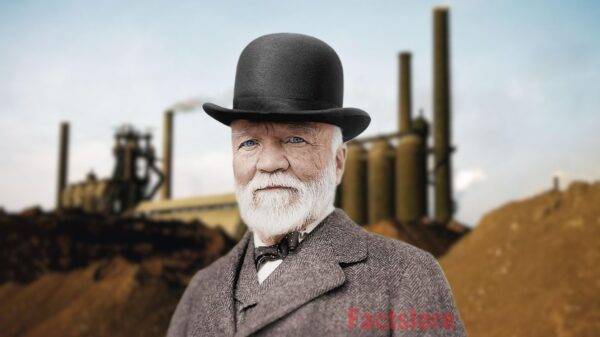
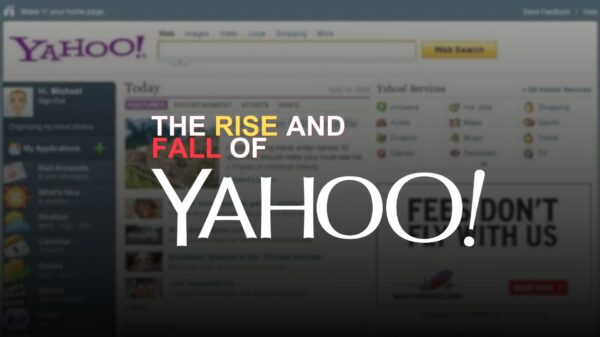
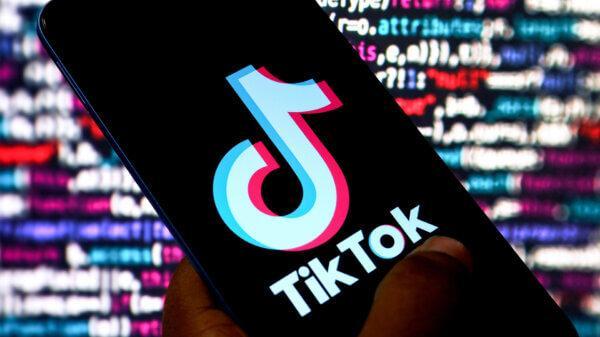
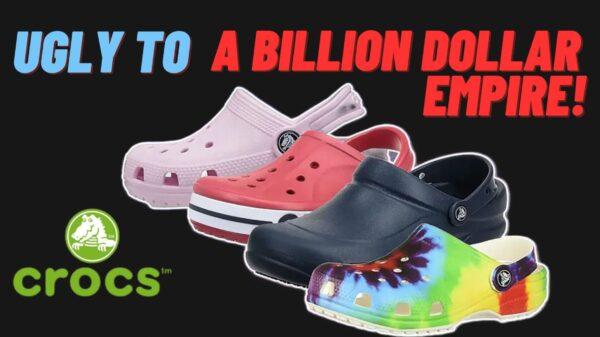



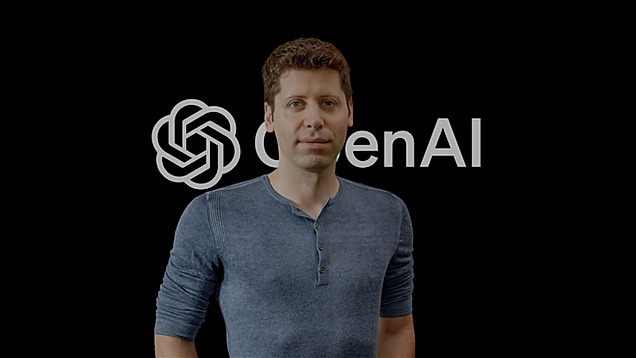
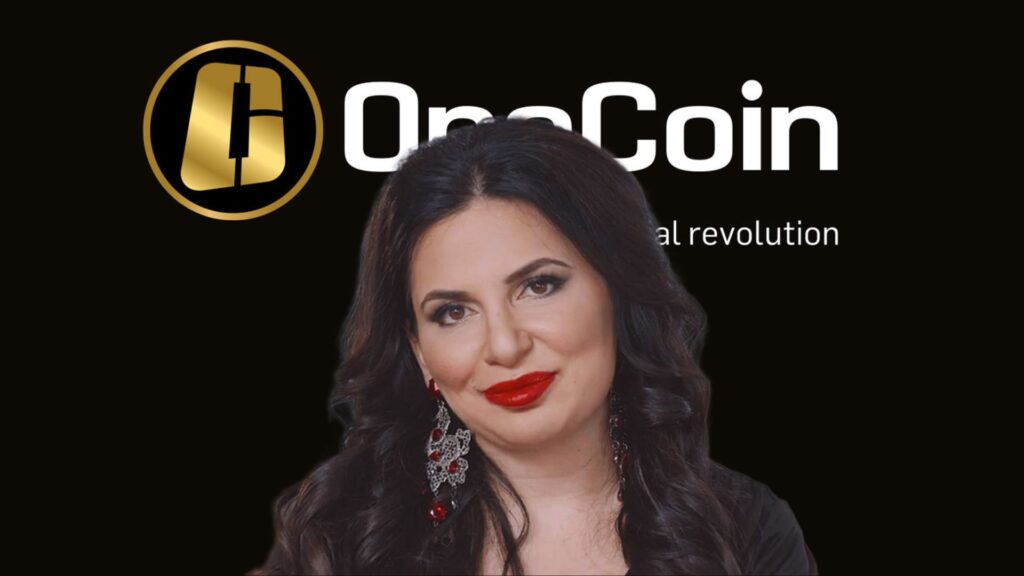
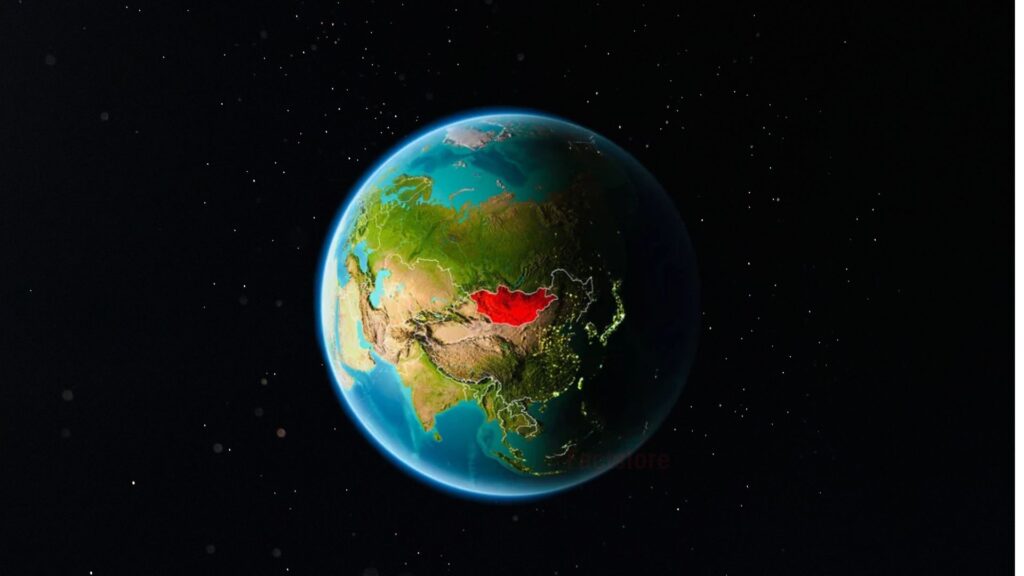

1 Comment. Leave new
[…] Also Read: The History of Coca-Cola – Uncovering the Dark Truths […]